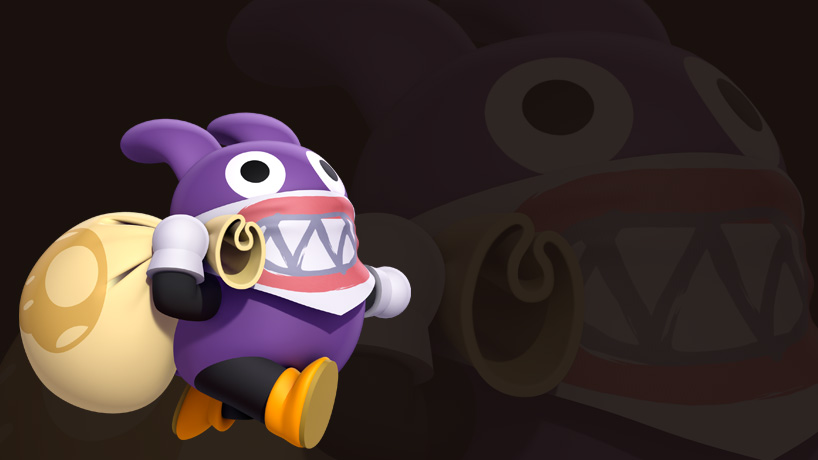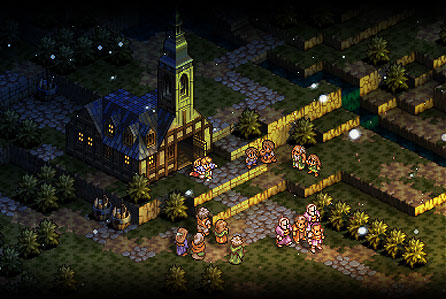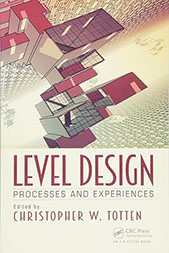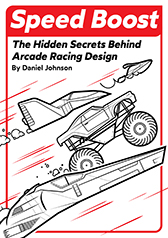Let’s Play – The Graveyard
October 4th, 2013
Text Links
Video
Microwave Scene (Metal Gear Solid 4: Guns of the Patriots)
http://www.youtube.com/watch?v=oLitq4_LemU
E3 2013 Game Design Notes and Commentary
June 28th, 2013
I got back from my trip around China last Saturday and it feels like it’s taken ages to catch up on E3 news and videos. Here’s what caught my attention at this year’s show:
New IPs
For a long time I’ve been hung up on the idea that new IPs represent progress in the games industry. This year, though, a few things changed my mind. The first was the E3 Nintendo Direct presentation. Although Nintendo didn’t announce a single new IP, and the coveted Retro Studios game turned out to be another Donkey Kong title, I loved everything they showed. Of the big three companies, Nintendo has the most exclusive and original titles, and they’ll probably have more to show at the next Nintendo Direct in a month’s time. The second thing is something that Shigeru Miyamoto said in an interview with GameIndustry.biz, a conclusion that I was forming myself after watching the three main conferences:
“So this is actually a discussion that I think is tricky to balance, and certainly internally at Nintendo we have people on the teams who say, “Wouldn’t this be better if we created a new IP around it?” But to me, the question of new IP really isn’t whether or not [you have a new character]… I look at it from [the perspective of] what is the gameplay experience in the game you’re playing? For a lot of people, they would say if you take an old game and wrap a new character around it, that’s a new IP, but that game is still old, and the experience is still old. So what we’re doing is we’re always looking at what type of new gameplay experience can we create, and that’s the same for whether we’re playing with one of our existing IPs or we’re doing something new.
Pikmin 3 is a good example; the Pikmin characters were something that were born out of a new gameplay idea when we first came up with that game. We created the gameplay idea first and we decided that the best characters suited for that gameplay idea were Pikmin characters. That’s where the Pikmin IP came from. Similarly, if you look at our booth here, we’re showing it as a showcase of all of Nintendo’s great characters, but in each and every one of those games the gameplay experience is what’s new. So from my perspective, it’s not a question of just how can we create a new character and wrap it around an old game and put that out and call it a new IP. It’s always about starting with a new gameplay idea and a new experience that’s unique from an interactive standpoint and then finding a character that’s best suited with that. In some cases, it may be an existing character, and in some cases it may lead us to a new IP at some point in the future.”
Miyamoto hits the nail on the head. New IPs are often perceived as original and innovative because the difference from established IP is immediately clear: there’s new characters and a new world. The gameplay, however, may be quite familiar. So the only way to really determine innovation is to look at the gameplay of each individual title.
The third thing is the lack of originality elsewhere in the conference. Sony said that they had a whole slew of new IPs coming in the next year or so, but only showed Drive Club and a CG trailer for The Order. TitanFall looks great, but everything else Microsoft showed was more of the same driving and shooting.
The Role of Nintendo Direct
I’m a big fan of the Nintendo Direct presentations, and also the Developer Direct presentations, because they slow down and take the time to explain to the viewer how the games work. As someone that enjoys thinking about game design, I really appreciate this format. Nintendo have copped a bit of slack for not doing a live presentation, but I think they’re better for it. My friend, Richard Terrell, said something that esonated with me recently which is that at E3, the games press is looking for sizzle, but Nintendo are taking the slow and truthful route by focusing on gameplay. I think this summarises the situation perfectly.
Third Party Support at Conferences
As has become increasingly apparent over the past few years, third party exclusives are now something of a rarity. Between the big three, there were something like eight exclusive third party games between them (Dead Rising 3, Ryse, Bayonetta 2, Wonderful 101, Crimson Dragon, Below, D4, and Sunset Overdrive). What’s interesting about all these exclusives is that they’re published by the console manufacturer themselves.
Something I’ve never understood is the air time that Sony and Microsoft give to multiplatform third party games. Sure, if they lock in an hour of exclusive content or get timed exclusivity on DLC, it’s kind of worthwhile, even though such bonuses are often quite trivial to begin with (Batman skins, yes!). However, if the game is identical to games on other consoles, I don’t think that it deserves much more of a mention outside of a name drop or presence in a video montage. Take for example, the trailers for Final Fantasy XV and Kingdom Hearts III at the Sony press conference or the Metal Gear Solid 5 trailer at the Microsoft conference. These games are coming to all platforms not because of good publisher relations, although it probably plays a part, but because of the direction of the market. So including them in the pressers, even as a gesture, is ineffective.
Sony Exclusives
According to Shuhei Yoshida, Sony have thirty titles in development at their worldwide studios, twenty of which will be released in the first year and twelve of which are new IPs. So far we’ve seen six of the twenty first party games to be released in the first year (Knack, Killzone Shadow Fall, Drive Club, Infamous: Second Son, The Order, and the Super Stardust HD successor) and three of the twelve new IPs (Drive Club, Knack, and The Order). I guess we have a lot to look forward to over the next year or so.
Gameplay, Please
FMVs, cutscenes, non-interactive sequences, and gameplay with a high degree of automation were more frequent than ever at this year’s show and it’s quite worrying. I mean, does anyone have any idea how to play Quantum Break?
Sony’s Presser
- Sony got a lot of positive press for doing nothing, ie. not enforcing DRM policies. The way that Sony were championed by gamers and the games press because of this just goes to show how beholden we are to these companies.
- Making online multiplayer only available to Playstation Plus members suggests that Sony, like Microsoft, are interested in moving to a service-based model.
- In the Microsoft conference, Phil Harrison talked up MS’s commitment to indies and then showed a trailer to Minecraft for Xbox One before shuffling along. In the Sony conference, they got eight independent developers on stage to show off their games. Both in numbers and the nature of the titles, this says a lot.
TitanFall
- One of the more interesting games of the show, despite being a first-person shooter.
- Jump boost/double jump, climbing up ledges, wall running, pushing off walls, and ejecting from mech mechanics, as well as the height difference between mechs and soldiers, add a vertical element to the game, increasing the spatial dynamic. It also appears as though the levels are designed in tiers and with a variety of ways to creatively use the movement mechanics. The mechs appear quite agile too. Just watching the characters move around looks like magic. I love it.
- The mechs can grab bullets and throw them back at their enemies. This is a nice way to add interplay to gunplay.
- The eject seat in the mechs, if manually controlled by the player, could act as a last ditch way to turn the tides of a fight by literally getting the jump on an opponent’s mech. Using the mechanic would therefore be a choice between the advantages of the mech and the opportunity to insta-kill an opponent’s mech. The speed of the evac’s vertical ascent should be optimised so that it’s both difficult for the opponents to target the soldier and for the soldier to orientate themselves towards the rival mech. This would make the evac mechanic high risk, high reward.
Killer Instinct
I found this comment by Eion on Eurogamer to be quite amusing:
“Meanwhile, Tekken Revolution launches tomorrow. It is free to play, with 8 characters free initially. It’s based on a solid, modern fighting game engine from a veteran fighting game developer – not an attempt to recreate an engine that was old in 1996, from a developer who has never touched a fighting game before.
Shocking how badly KI holds up to that kind of comparison.”
Metal Gear Solid 5
- MGS5 looks to continue the children of war theme from Metal Gear 2.
- They didn’t show enough straight gameplay for me to make further comment. I will take this chance to once again bemoan open-word gameplay, though. Whenever a game developer says that their game is open-world, what they’re really saying is that they’ve given up on making the kinds of concentrated challenges that are needed to facilitate the player’s learning and mastery of the game system. Open-ended challenges should follow restricted practice, such is the nature of how we learn. I hope MGS5 begins with restricted practice and then leads into freer practice. Maybe Ground Zeros is that restricted practice.
- I wonder how they’ve changed the CQC system.
Super Mario 3D World
- The camera adjusts to simplify the perspective, as with the Mario Galaxy games. The “main” semi-overhead camera gives the player a good view of the area around them. It’s rather zoomed out so that they can also see what’s behind them. It’s ideal for multiplayer. The camera work in the recent Mario games is a huge improvement over Super Mario 64.
- There seems to be a scurry mechanic where the characters kick up puffs of direct. The dirt puff kicking (?!) when walking is also more exaggerated to help the player judge depth.
- I’m curious about how the gameplay is structured to support multiple roles.
Ryse
- This game is built on a foundation of contextual combat, QTEs, and voice commands, so the action is probably going to be quite static.
Dead Rising 3
- Aiming looks automatic and unreliable.
- You can pick up all these weapons, but how interesting are they to use? Each weapon should have its own unique quirks that can be mastered. Also, the distribution of weapons, assuming you can’t upgrade them or learn new moves with them, is really important to help the player develop and keep them engaged until the end of the game. That is to say, weapon distribution equals game progression.
Watch Dogs
- Tablet and console play is cool. Tablet play could also be done with a Wii U gamepad.
- The camera jumping and third-party environment manipulation is awesome. This could be done with the Wii U gamepad as well, where on the TV, the avatar is shown looking at his phone while on the gamepad, the player is controlling the cameras and environment.
- It would be good if hacking required more than a button press. De-optimising the hack mechanic or replacing it with a short mini-game would add tension, character, and skill to the process. For example, completing a series of button prompts, pressing buttons to a timer, or engaging in a simple puzzle. Why not have different devices or classes of devices (traffic control, lights, cameras, etc) have their own way of being hack? You could make some things harder to hack than others so that as you get through the game, and have to hack at a higher level, it’s more difficult to hack or you have more layers to hack through.
- Imagine if Ubisoft removed all the shooting and fighting and instead focused on designing everything around the hacking function. They could swap out the violence for pursuits or monitoring missions where you need to stay in range of an NPC long enough to track their data.
Final Fantasy XV
- I love the dazzling look of this game, but the gameplay trailer makes me think that the camera is too zoomed in and there’s too much auto-lock on, two things which squash the use of space.
Castlevania Lords of Shadow 2
- Form fits function would have done away with the obvious highlights when climbing.
- Combat looks like God of War, they even copied the golden fleece mechanic from God of War II.
Plants Vs Zombies: Garden Warfare
- The existence of this game makes no sense to me.
- They just re-skinned regular team shooter classes as Plants Vs Zombies characters. The cactus is a sniper, the sunflower is a medic, the chomper is a melee unit, and the pea shooter can plant turrets.
Mario Kart 8
- The first thing that struck me is that the graphics look awesome, especially compared to Mario Kart Wii, relatively speaking.
- Instead of taking an additive approach to Mario Kart, I’d rather they try to rework this game from the start. I love Mario Kart, but have no interest in this game.
Real-Life Game Dynamics
February 14th, 2013
A game dynamic is a variable which affects two or more areas of a game system. For example, in many Japanese SRPGs, height is a dynamic. It affects the attack and movement range of units and the damage one unit gives to another. So, higher units have more range and slightly stronger attacks than lower units. The height dynamic allocates strategic advantage and disadvantage to certain areas of the battlefield, encouraging the player to plan their tactics around the map’s topography. In this way, dynamics make games more engaging. You can read more about dynamics here and here.
When writing about dynamics for my book on Wario Land 4, my thoughts drifted from game dynamics to real-life dynamics and how the dynamics that make life interesting could be emulated in a video game. Below are some theoretical examples that I’ve come up with. I found it quite fun putting these together, so feel free to share any of your own ideas in the comments.
Energy
- Energy is an artificial game dynamic.
- It can determine the speed of the avatar’s walk/run.
- It can limit the avatar’s actions and movement range in one turn.
- It can act as a decaying dynamic—as in Harvest Moon, where each action takes some energy—so that the avatar can only make so many actions before they need a rest.
- The restrictions of the former two dot points prompt the player to carefully consider their actions. That is to say, they add a strategic element.
- It can determine how long the avatar sleeps and therefore how much time they have available the next day.
Drunkenness
- Drunkenness is an artificial game dynamic.
- It can rise the more the avatar has to drink.
- It can determine options available in dialogue trees (the drunker, the less polite).
- It can cause the avatar to stagger (I think GTA4 does this).
- It can smear and blur the screen and make HUD elements wander from their default positions.
- It can cause NPCs to look at you.
Noise
- Noise is an organic game dynamic.
- It can obscure the player’s ability to hear and therefore respond to NPCs.
- Different places can have different noise levels.
- It can determine whether or not an NPC hears something the avatar says to another NPC (like a secret).
- Noise could be the core dynamic of an aural version of Magic Eye, where the player must listen to audio until they hear a secret message.
- Different surfaces can make different noises when the avatar steps on them (Metal Gear).
Need to go to the Toilet
- This is an artificial dynamic.
- The more the avatar eats/drinks, the stronger the dynamic.
- Like energy in Harvest Moon, the need to go to the toilet can force the player to schedule their actions.
- When the need to go to the toilet reaches a certain threshold, the avatar could be given a run ability and the player could be prompted to engage in a short button-mashing exercise to “hold it in”. The greater the need, the more intense and frequent the button mashing sequences.
- The greater the need, the longer the avatar spends in the toilet.
Sweat
- Sweat is an artificial dynamic.
- It can be presented on the avatar itself, form fits function.
- Being too sweaty can cause the NPCs around the avatar to act negatively towards them.
- On the other hand, sweat can be a positive attribute in some places, like the gym. It might cause NPCs to start a conversation with the avatar.
- It can persuade the player not to abuse the run mechanic.
- It can dynamically change depending on the seasons.
- Taking a shower resets the sweat dynamic.
Oxygen
- Oxygen is an artificial dynamic.
- Oxygen is quite common in games already, but instead of just being designated to swimming sequences, it can be used in other contexts too. Such as escaping a burning building. When the avatar stands next to smoke, their oxygen level goes down.
- It can be an indication of air quality, represented visually through smog, the colour of the sky, and whether or not NPCs wear breathing masks (I have no idea what these things are called in English. They’re called 口罩 kǒu zhào in China).
- Continuing with air quality, oxygen can determine the avatar’s running distance.
Bright Light
- Light is an organic dynamic.
- Resident Evil 5 incorporates light and shade into its gameplay, but from what I can tell, it isn’t really that deep—admittedly, I haven’t played much of the game, can anyone offer a second opinion? >_>
- When the avatar moves from shaded to bright areas, and vice versa, the game simulates the eye’s adjustment to lighting levels. The game designer or enemy AI can explicitly use this dynamic to obscure the player’s view.
- Looking into the sun stuns the player.
- Enemies/the player can use high-intensity lights or torches to temporarily blind the other party.
- Sunglasses reduce the effectiveness of bright lights.
- Enemies can detect shadows, and the player can use shadows to determine an enemy’s location.
What are some unique game dynamics in games you’ve played?





 Game Design Companion: A Critical Analysis of Wario Land 4 - $7.99
Game Design Companion: A Critical Analysis of Wario Land 4 - $7.99 Level Design: Processes and Experiences
Level Design: Processes and Experiences Speed Boost: The Hidden Secrets Behind Arcade Racing Design - $5.99
Speed Boost: The Hidden Secrets Behind Arcade Racing Design - $5.99 Adventures in Games Analysis: Volume I - $5.99
Adventures in Games Analysis: Volume I - $5.99







